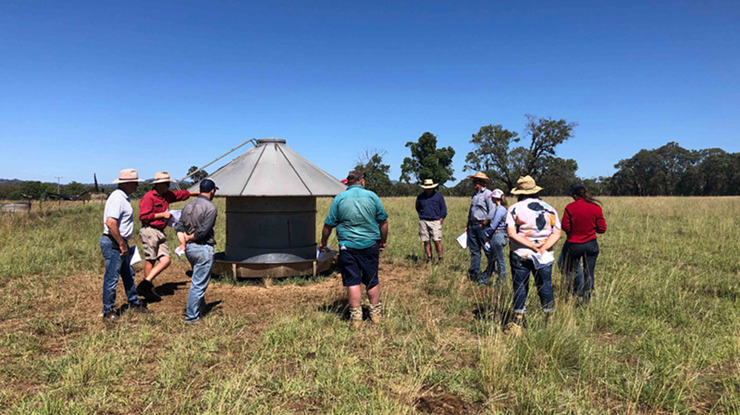 Producers from around the Warrumbungles met on-farm to learn more about supplementation
Producers from around the Warrumbungles met on-farm to learn more about supplementation
Livestock gains through making grain count
When skies break after a dry period, there is no better feeling than returning the grain feeder to the shed for the last time, after weeks, months, or even years of hand-feeding livestock. In the Central West of NSW, a group of producers have found a way to utilise their feeding investments, even when the grass is green.
In the ‘Grain on grass’ Producer Demonstration Site (PDS), the Warrumbungle Mixed Farm Producer Group (WMFPG) used their otherwise dormant feeding equipment and on-farm grain stores to supplementary feed their pasture- and crop‑fed cattle and lambs.
The objective was to use a small amount of low-value grain to turn off stock quicker, increasing carrying capacity without increasing the cost of forage production.
By November 2024, producers aimed to increase live weight gain/head/day (by 20%) and carrying capacity (by 3.5%), while decreasing grazing days (by 13%).
Finding the right ration
Central West Local Land Services (LLS) Team Leader Neroli Brennan said prior to grain feeding, forage and grain feed tests were a crucial process for all demonstration sites.
“These tests are highly recommended to get an understanding of the quality of feed, to ensure the animal’s nutritional requirements are being met,” Neroli said.
When feed testing, producers can work with their local livestock advisor to assess the current seasonal conditions and make practical decisions to meet their livestock production goals.
Once the quality of feed – both grain and pastures – was established, an appropriate ration could be developed.
On one PDS host property, cattle grazing on lucerne achieved an increase in liveweight of 48%, supplemented with a ration including grain (85%), hay (10%) and concentrate (5%), at a total cost of $2.15/kg of supplement.
Herd health
Before beginning supplementary feeding, Senior Land Services Officer Patricia O’Keeffe said there are several factors to consider when it comes to preparing the animal.
“When feeding anything new, it is highly recommended producers introduce it to the animals slowly to allow their rumens to adapt,” she said.
“This is particularly so with grain to avoid the risk of acidosis occurring, which has signs such as diarrhoea, reduced appetite, depressed appearance, and animals looking ‘tucked up’ due to abdominal pain.”
Once a new stock has been introduced to the feed, continuing frequent feeding is important to ensure the grain does not need to be reintroduced.
“When introducing the grain, it would be advisable to feed the grain every day. Once you are feeding the full ration, this could still be fed daily or could be reduced to once every second or third day,” Patricia said.
“Whatever the frequency, care needs to be taken to avoid grain poisoning if there is too long in between the animals eating the grain.”
Another tip is to condition score livestock to assess the performance and ration needs of the animal, as well as help to determine if there are any ‘bullies’ and ‘shy feeders’ who are missing out on the additional feed.
Calculating costs
While the purpose of the PDS was to use grain on-hand and utilise capital investments to improve productivity, supplementary feeding still comes at a cost.
Like many aspects of livestock production, producers found grain supplementation on grazing crops and tropical pastures is effective in increasing weight gain, but only worthwhile when seasonal and market conditions are right.
For certain production targets, the price may be justified, such as critical joining weight for heifers, or to conserve pastures.



